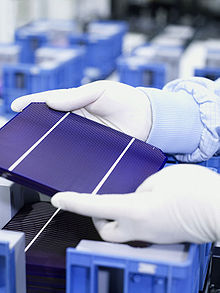
The cost of a residential solar system has come down 33% since 2008 improving financial payback1. However, have you ever asked yourself about the energy payback of the solar panels? Energy payback refers to the length of time it takes a solar system to produce, or payback, the same amount of energy required for its manufacture, transport and installation.
A 2011 study2 found that it took about one year for a solar system to generate the same amount of energy required to manufacture, transport and install that solar system. Seven years earlier, in 2004, the US National Renewable Energy Lab3determined that it took three to four years for energy payback. In just seven years the energy payback is significantly faster.
We can expect the future energy payback time to be even better. For example, recent manufacturing breakthroughs could reduce the amount of pure silicon used in a solar panel by up to 90%. Creating pure silicon is an energy-intensive part of making a solar cell, so reducing the amount of silicon used results in a faster energy payback.
The energy payback calculation also depends on the location of the installed solar system. In the 2011 study, the PV system was assumed to be in a climate similar to the Midwest or East Coast. In the Bay Area a solar installation with little shade can be expected to generate about 20% more energy per year. So the energy payback for a solar system in the Bay Area would be closer to 10 months.
The useful life of a solar PV system is 25 to 30 years, so during the vast majority of its life, a solar system generates energy beyond the amount required to manufacture, transport and install that system.
Solar installed on rooftops is particularly efficient because the sun delivers the energy right where it’s being used, in the home or factory. Little energy is lost in transmission. And since peak energy use is in the afternoon when the sun is out, solar helps reduce our more expensive peak loads.
The energy payback period for solar energy is now less than one year and we can expect faster payback in the future. Going solar today offers clean, renewable energy delivered daily to your doorstep.
Author: Mike Balma from SunWork.org – a nonprofit in the San Francisco Bay Area that installs solar electric systems on small-energy-footprint homes and nonprofits with the help of trained volunteers.
References:
1 Go Solar California Statistics www.californiasolarstatistics.org/reports/quarterly_cost_per_watt
2ECN Study for REC – www.recgroup.com/en/sustainability/reducing-energy-payback/
3NREL Study – www.nrel.gov/docs/fy04osti/35489.pdf
 Eco Kids – How to Raise True Stewards of the Environment
Eco Kids – How to Raise True Stewards of the Environment Simple Energy Efficiency Tips from the Home Improvement Guru
Simple Energy Efficiency Tips from the Home Improvement Guru 9 Smart Ways to Winterize Your Home for Comfort and Savings
9 Smart Ways to Winterize Your Home for Comfort and Savings